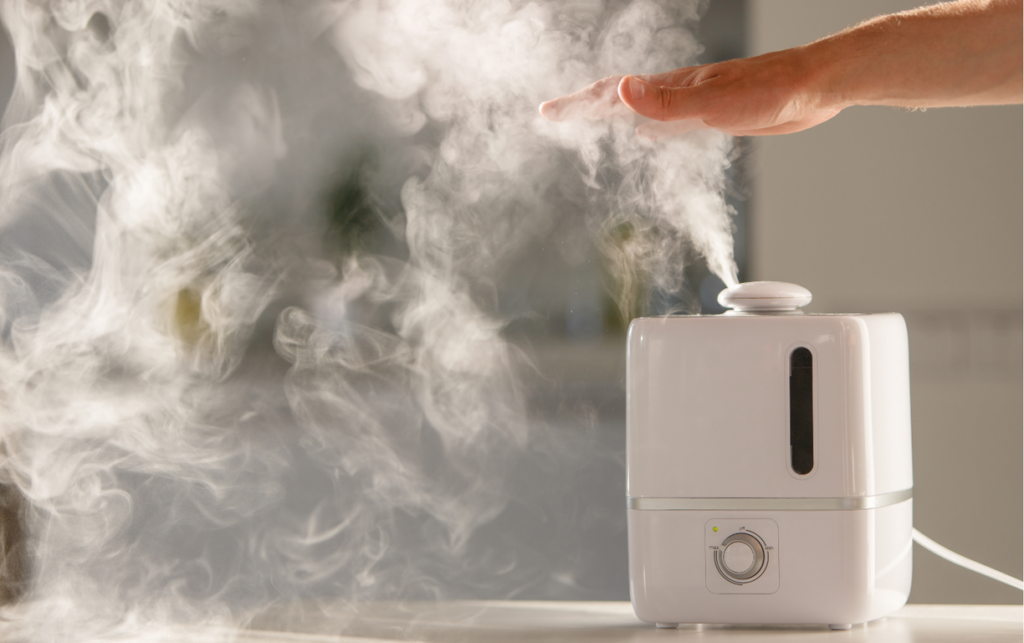Physical Address
304 North Cardinal St.
Dorchester Center, MA 02124
Physical Address
304 North Cardinal St.
Dorchester Center, MA 02124

When the heat of summer rolls in, many of us search for ways to stay cool and comfortable. One common household device that often comes into play is the humidifier. But does it actually make a room cooler? That’s a question I’ve pondered myself, especially during those sweltering days when the air feels heavy and stagnant.
Humidifiers are typically known for adding moisture to the air, which can h
When the heat of summer rolls in, many of us search for ways to stay cool and comfortable. One common household device that often comes into play is the humidifier. But does it actually make a room cooler? That’s a question I’ve pondered myself, especially during those sweltering days when the air feels heavy and stagnant.
Humidifiers are typically known for adding moisture to the air, which can have various benefits for our health and comfort. However, the relationship between humidity and temperature can be a bit tricky. In this article, I’ll explore how humidifiers work and whether they can truly help lower the temperature in your living space. Let’s dive into the science behind humidity and comfort.

Humidifiers are devices that add moisture to the air, enhancing indoor comfort and health. Understanding their types and functions provides insight into their role in room temperature dynamics.
A humidifier is a home appliance that increases humidity levels in enclosed spaces. It combats dryness from heating systems, air conditioning, or arid climates. By releasing water vapor or steam, humidifiers maintain optimal humidity levels, often targeted between 30% and 50%. Proper humidity levels alleviate issues like dry skin, irritated sinuses, and static electricity.
Evaporative humidifiers use a fan to draw air through a wet wick or filter, evaporating water into the air. These devices self-regulate, as increased humidity reduces evaporation rates.
Ultrasonic humidifiers emit a fine mist using ultrasonic vibrations. They operate quietly and require minimal maintenance.
Steam vaporizers heat water to create steam, which cools before entering the room. While effective at increasing humidity, they may pose burn risks.
Impeller humidifiers use a rotating disk to fling water droplets into the air. They operate silently and are effective in smaller rooms.
Central humidifiers connect to a home’s HVAC system, distributing moisture throughout the entire house. These units maintain consistent humidity levels but require professional installation.
Hybrid models combine multiple humidification methods, providing versatile performance for varying room sizes and conditions.
Understanding humidifiers’ types helps in choosing the right device based on specific needs and living environments.
Humidity significantly influences our perception of temperature. Higher humidity levels increase moisture in the air, making it feel warmer, while lower humidity can create a cooler sensation.
Humidity impacts how we perceive temperature through the body’s ability to cool itself. When humidity rises, sweat evaporation slows, reducing cooling efficiency. I’ve noticed that on humid days, the heat can feel oppressive, even at lower temperatures. Conversely, in dry conditions, sweat evaporates quickly, enhancing cooling. This phenomenon is measured by the heat index, which shows how temperature feels based on humidity levels. For example, a temperature of 90°F at 70% humidity can feel like 105°F.
The evaporative cooling effect occurs when water evaporates into the air, absorbing heat. Humidifiers can utilize this principle, especially evaporative ones. They add moisture to the air, which can help lower temperatures slightly, especially in dry environments. When moisture particles evaporate, they draw heat energy from the surrounding air. Consequently, in spaces with low humidity, I’ve found that using a humidifier can provide a cooling sensation, although this effect diminishes in already humid conditions. Incorporating this knowledge can assist in optimizing indoor climate comfort.
Humidifiers primarily add moisture to the air, and understanding their impact on room temperature involves examining various factors. I’ll explore the influences on temperature perception and relevant studies that provide insight into this topic.
Temperature perception involves several factors, including:
Research indicates that humidifiers can create a cooling effect under specific conditions:
These findings clarify that while humidifiers may not lower the physical temperature of the air, they can enhance comfort and influence how temperatures feel in different environments.
Using a humidifier offers several advantages for indoor environments, particularly in dry conditions. Here’s a closer look at the key benefits.
Improved air quality is a significant benefit of using a humidifier. Humidifiers add moisture to the air, which helps to alleviate dryness that can irritate the respiratory system. They can reduce the incidence of dry skin, chapped lips, and scratchy throats. Additionally, maintaining optimal humidity levels can minimize airborne dust, allergens, and pathogens. Studies indicate that keeping humidity between 30-50% significantly reduces the survival rate of viruses and bacteria in the air. This reduction leads to cleaner air and a healthier living environment.
Comfort in dry conditions becomes much more manageable with a humidifier. When indoor air lacks moisture, it can feel colder, making heating systems work harder, resulting in discomfort. By maintaining humidity levels within the recommended range, I can enhance my overall comfort and create a more pleasant living atmosphere. Research has shown that adding humidity can make the air feel warmer, which allows me to lower thermostat settings. Increasing humidity by just 10-20% significantly improves comfort during winter months, reducing the need for excessive heating. Overall, a humidifier effectively boosts comfort levels in dry conditions.
Using a humidifier can enhance comfort in dry environments by improving humidity levels. While it won’t directly lower the air temperature it can create a cooling sensation that makes hot days more bearable. In areas with low humidity a humidifier can aid in sweat evaporation helping our bodies cool down more effectively.
Choosing the right humidifier type for your space is essential. Whether you opt for an evaporative model or an ultrasonic one understanding your specific needs can lead to better indoor air quality and comfort. Overall a humidifier is a valuable addition to any room especially during the hot summer months.